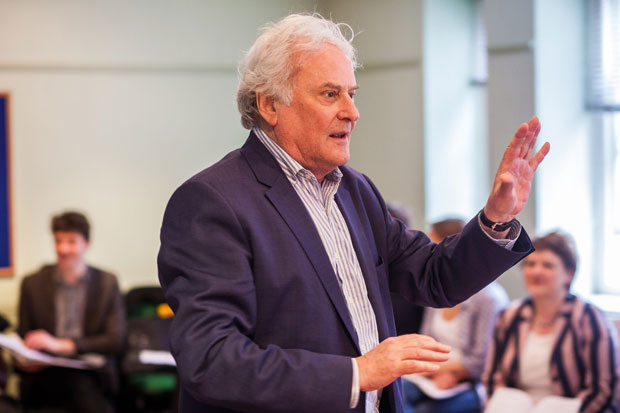‘America,’ said John Updike, ‘is a vast conspiracy for making you happy.’ If that’s true, there have been few more successful conspiracies than the Broadway musical — that is, the ‘book’ (meaning ‘play’) musical — a dramatic form that blends drama of character and narrative with song and dance. ‘Words make you think thoughts, music makes you feel a feeling, a song makes you feel a thought,’ said the songwriter Yip Harburg. The best musicals have a thrilling seamlessness and a cumulative emotional charge; the worst are chunks of dialogue interleaved with musical interludes.
The first ‘book’ musical was John Gay’s The Beggar’s Opera, written in 1728. Lacking a genre to lump it with, it was called a ‘ballad opera’ and like its distant Broadway descendant it brought together the worlds of high and low culture and popular entertainment. It was part satire, part social criticism, part romance, and part pure entertainment opportunistically geared to the tastes of its intended audience, who enjoyed being voyeurs of low-life sex and violence.
The first American attempt to emulate The Beggar’s Opera was called The Black Crook. It opened in 1866 with a plot of sorts — a derivative Faustian melodrama — characters of sorts, spectacle, dancing (an ‘Amazon parade of legs’), a number called ‘You naughty, naughty men’ and was a triumph of marketing. It had many genteel rivals from European imports: opéra bouffes from Paris and operettas from Vienna, like Franz Lehár’s The Merry Widow. Operetta bred its Broadway version, such as Rose-Marie and The Desert Song, dripping in syrupy Ruritanian romanticism.
Operetta, musical comedy, burlesque, revue (this was the Golden Age of Ziegfeld), minstrel shows and the Yiddish theatre were like tributaries flowing into a wide, deep and muddy river.








Comments
Join the debate for just £1 a month
Be part of the conversation with other Spectator readers by getting your first three months for £3.
UNLOCK ACCESS Just £1 a monthAlready a subscriber? Log in